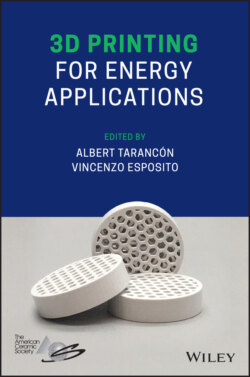Читать книгу 3D Printing for Energy Applications - Группа авторов - Страница 31
1.5.2 CAD Design and Shrinkage Compensation
ОглавлениеThe hybrid process chain, in its entirety, is as illustrated in Figure 1.6. The CAD body of the component is designed specifically for the process chain. This is done in order to compensate for shrinkage during the sintering step. Shrinkage is typically up to 30% but can be higher for specialty feedstocks. The shrinkage behavior of small‐sized parts (<50 × 50 × 50 mm3) is quite uniform and predictable. Larger sized components, however, require accurate multi‐physics simulation models for shrinkage behavior. The shrinkage typically is considered to be isotropic for binder jetting and vat photopolymerization [95]. For filament extrusion, the shrinkage is normally anisotropic even for smaller parts with a larger shrinkage in the normal direction to the layers. This is due to a flow phenomenon where the powdered filler has a tendency to concentrate in the very core of the individual extruded strands of filament, leaving a skin layer with a little amount of particles in the skin layer. As such, the powdered filler concentration in the normal direction to the layering of the part exhibits alternating laminae of high and low particles. During sintering, the low concentration zones see more matrix material removal during debinding and thus higher shrinkage.
